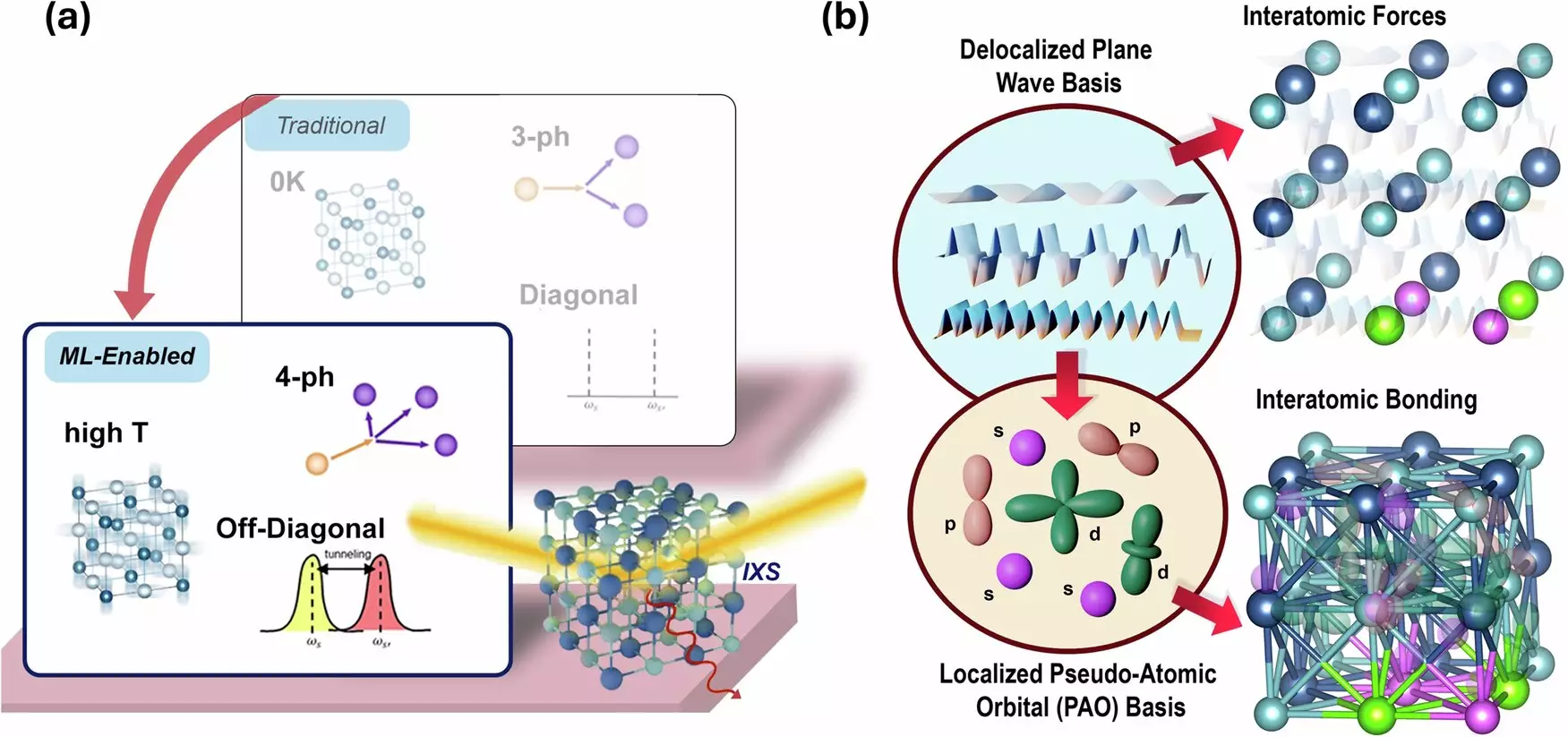Researchers at Cornell University have made significant strides in understanding the puzzling behavior of a class of materials known for their potential in thermoelectric energy conversion. This research centers around germanium telluride (GeTe), a member of the phase-change material family. Conventional wisdom suggested that, as the temperature increased, a distinctive change in properties occurred, prompting curiosity among scientists. While it had been observed that GeTe exhibits an increase in lattice thermal conductivity with rising temperatures, the scientific community had yet to pinpoint the underlying reasons for this phenomenon.
Leading this inquiry is Zhiting Tian, an associate professor at the Sibley School of Mechanical and Aerospace Engineering. Her team utilized an innovative blend of machine learning techniques and advanced X-ray scattering to dissect the mechanisms responsible for GeTe’s unusual thermal conductivity behavior. By leveraging these powerful tools, the team aimed not merely to observe but to elucidate the intricate relationships between temperature and material properties.
One of the pivotal discoveries made by Tian and her colleagues revolves around the transformation of GeTe from a rhombohedral structure to a cubic structure as it is heated. This phase transition is essential to understanding the material’s thermal dynamics. Key to their findings was the observation that the bonds between second-nearest neighbors—specifically Ge-Ge and Te-Te atoms—significantly strengthened during this thermal transition. The study reported an impressive 8.3% increase in Ge-Ge bond strength and a staggering 103% increase in Te-Te bond strength as the temperature ranged from 693 Kelvin to 850 Kelvin.
Such changes in atomic bonding are not trivial; they suggest a deeper interaction at play that contributes to enhanced thermal conductivity. The research community has often grappled with the complexities of these interactions, emphasizing the importance of using sophisticated methodologies to capture the subtleties involved in thermal transport mechanisms.
The combination of machine learning with first-principles calculations stands out as a methodological breakthrough in this research. Tian noted that the computational challenges of studying temperature effects and higher-order scattering in detail are formidable. However, by harnessing machine learning algorithms, the research team could efficiently explore the multi-dimensional interactions impacting thermal conductivity. This approach allowed them to integrate various factors—such as temperature dependence, four-phonon scattering, and coherence effects—into a single coherent framework, yielding insights that were previously difficult to obtain.
Employing a well-established chemistry technique for bonding analysis further validated their findings, confirming that the strengthened second-nearest neighbor bonds indeed play a critical role in the lattice thermal conductivity increase observed in GeTe. This integrative approach paves the way for a new understanding of thermal transport in complex materials.
Broader Implications for Future Applications
The implications of this research extend beyond just improved understanding. Phase-change materials like GeTe are viewed as candidates for a variety of applications in electronics and optoelectronics due to their remarkable ability to switch properties based on temperature. Additionally, the potential of GeTe as a substitute for lead telluride in thermoelectric devices cannot be overlooked, especially considering the toxic nature of lead. Tian’s work contributes significantly to the Cornell Atkinson Center for Sustainability, highlighting the importance of sustainable material choices in technological advancements.
Furthermore, Tian’s research has sparked interest in other materials that exhibit similar enhancements in thermal conductivity, such as tin-telluride and tin-selenide. This opens new avenues for investigation in the field of thermoelectrics, where understanding material behaviors at phase transitions can lead to more efficient energy conversion technologies.
The work conducted by researchers at Cornell provides a deeper framework for understanding the thermal properties of phase-change materials, laying the groundwork for future breakthroughs in thermoelectric applications. By combining innovative computational techniques with experimental validation, scientists are better equipped to tackle some of the most challenging questions in material science. As we continue to explore the vast potential of materials like GeTe, we may ultimately unlock new, efficient pathways for energy conversion that could significantly impact global energy sustainability.

